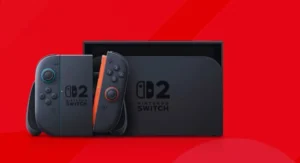Common Challenges in Senior Living Facility Management and How Technology Can Help
By TOI Staff
February 13, 2023
Update on : February 13, 2023

Senior living facilities are vital in providing care and support for older adults. These facilities offer various services, including independent living, assisted living, memory care, as well as skilled nursing care. Effective management of senior living facilities is crucial in ensuring the well-being and safety of residents. However, senior living facilities face several challenges in management. This article discusses the challenges senior living facilities face in management, how senior living software can help address these challenges, and how to choose the best senior facility management software.
Challenges in Senior Facility Management
One of the biggest challenges senior living facilities face is the large volume of data that must be collected and stored. This includes medical records, medication administration records, and other important information such as residents’ demographics, medical history, insurance information, and care plans. Staff must also have real-time access to this data to ensure timely and appropriate care delivery.
Additionally, data security is a critical concern in senior living facilities. Residents’ personal and medical information must be protected to ensure privacy and confidentiality. Compliance with healthcare regulations such as HIPAA is also an essential aspect of data management. Other challenges senior living facilities face include limited staff resources and budget and difficulty tracking residents’ engagement and participation in activities.
The Role of Senior Living Software in Addressing Challenges
To address these challenges, senior living facilities use a variety of software solutions. Electronic health record (EHR) systems store and manage residents’ medical information. These systems allow for easy access to medical records and history, improve communication among staff and healthcare providers, and facilitate tracking residents’ health status and progress.
Medication management systems are used to ensure medication safe and accurate administration. These systems automate the medication administration process, reduce errors, improve medication regimen compliance, and allow tracking of medication usage and inventory.
Resident engagement and activity scheduling software are used to plan and schedule activities for residents. These systems allow for easy planning and scheduling of activities, improve staff and residents’ communication, and facilitate tracking of residents’ engagement and participation in activities. Safety and security systems, such as cameras and emergency call systems, monitor the facility and protect residents. These systems allow for real-time facility monitoring, improve emergency response times, and enhance the security and protection of residents.
Facility management software is used to manage the facility’s day-to-day operations, such as maintenance and billing. These systems allow for easy facility operations management, improve staff communication, and facilitate billing and accounting. Reporting and analytics tools are used to track and analyze data to identify trends and areas for improvement.
Benefits of Using Senior Living Software
Using software solutions to manage senior living facilities can bring several benefits. Improved efficiency and accuracy in delivering care are two of the most significant benefits. Staff can access residents’ medical information and medication administration records quickly and easily, reducing the risk of errors. These software solutions also allow enhanced communication and collaboration among staff, as staff can easily share information and communicate. Additionally, senior living software allows tracking and analyzing data to identify trends and areas for improvement. Improved compliance with healthcare regulations, enhanced security and protection of residents’ personal and medical information, improved tracking and monitoring of residents’ engagement and participation in activities, reduced administrative burdens, and optimized staff resources and budget are some of the benefits of using senior living management software.
Choosing the Best Senior Living Facility Software
Choosing the best senior living facility software can be daunting, as many options are available on the market. To ensure that you select the best software for your facility, it is crucial to assess your specific needs and priorities. Start by creating a list of your current pain points and the features that are most important to you. For example, if medication management is a significant concern, look for software that offers automated medication administration and inventory tracking.
Next, research various software options and compare their features and pricing. It’s also important to consider the software’s user interface and ease of use, as well as its scalability and integration capabilities with other systems. Additionally, check if the software vendor offers training, customer support, and updates. Finally, consider getting a trial or demo version of the software to ensure that it fits your needs and is user-friendly for your staff. The facility owners and administration choose all-in-one senior living software to have all the functionalities in one place instead of using multiple different software.
Conclusion
Senior living software can play a critical role in addressing the challenges senior living facilities face in management. By providing tools for managing and tracking data, automating tasks, and enhancing communication and collaboration among staff, senior living management software can lead to improved care and a better overall experience for residents and staff. Additionally, senior living facility software can help facilities comply with healthcare regulations and optimize the facility’s management. Overall, all-in-one senior living software can be a powerful tool to help senior living facilities meet their goals of providing the best care and support for older adults.
















